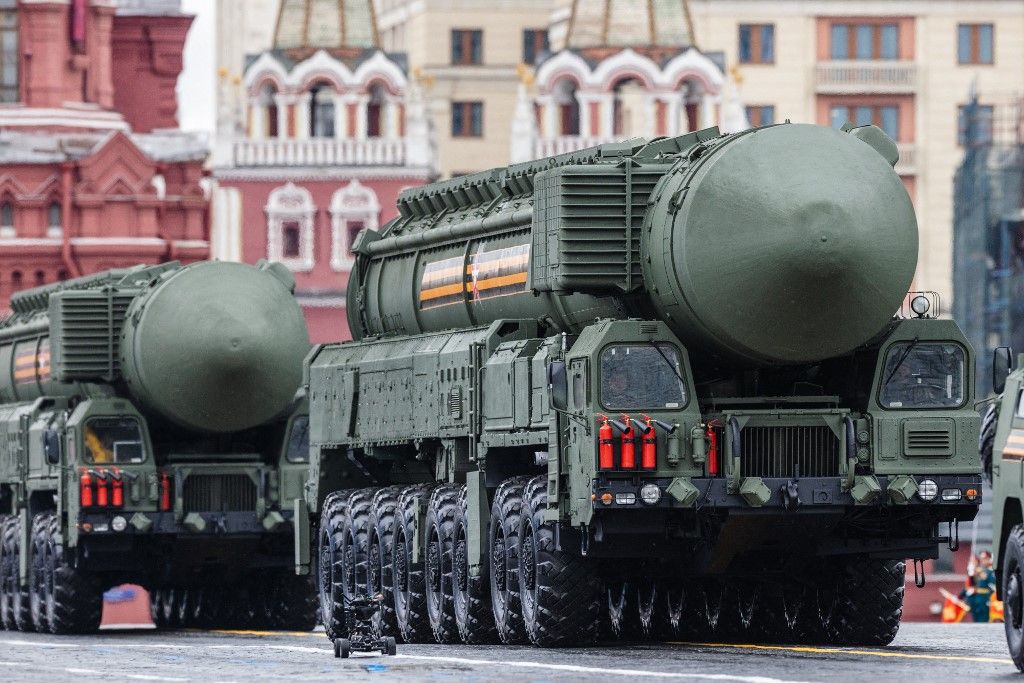Russia Rehearsed Delivering Massive Retaliatory Nuclear Strike
The exercise, which involved the test launch of missiles from a land-based silo, a nuclear submarine, and from long-range bomber aircraft, comes as Moscow is locked in what it casts as an existential standoff with the West over Ukraine.
(DEFENCE SECURITY ASIA) — Russia has successfully tested its ability to deliver a massive retaliatory nuclear strike by land, sea and air, a Kremlin statement said on Wednesday (Oct 25), a display of force which coincides with Moscow de-ratifying a landmark nuclear test ban treaty.
The exercise, which involved the test launch of missiles from a land-based silo, a nuclear submarine, and from long-range bomber aircraft, comes as Moscow is locked in what it casts as an existential standoff with the West over Ukraine.
With tensions at their highest level since the 1962 Cuban missile crisis, Russia – which has the world’s largest nuclear arsenal – is moving quickly to revoke its ratification of a nuclear test ban treaty to bring itself into line with the United States.
“Practical launches of ballistic and cruise missiles took place during the training,” the Kremlin said in a statement on the nuclear drills.
State TV showed Defence Minister Sergei Shoigu reporting by video link to Putin on the exercise, which he said was a rehearsal for “a massive nuclear strike” in response to an aggressor’s nuclear attack.

A Yars intercontinental ballistic missile was fired from a test site at a target in Russia’s far east, a nuclear-powered submarine launched a ballistic missile from the Barents Sea, and Tu-95MS long-range bombers test-fired air-launched cruise missiles, the Kremlin statement said.
“In the course of the events, the level of preparedness of the military command authorities and the skills of the senior and operational staff in organising subordinate troops (forces) were tested,” it said.
“The tasks planned in the course of the training exercise were fully accomplished.”
Video footage of the exercise published by the defence ministry showed the land and submarine-based missiles noisily streaking into the night sky and nuclear-capable bomber aircraft taking off from an airfield under the cover of darkness.
Russia carries out such exercises to test its so-called nuclear triad from time to time. The United States also carries out regular nuclear drills.

Russia has made it clear that – despite its de-ratification – it has no plans to abandon a 1992 moratorium on nuclear test blasts in line with the Comprehensive Test Ban Treaty (CTBT), which Moscow has signed.
Russia would only resume such testing – a move that Western military experts believe it might be tempted to do to signal intent and evoke fear in any standoff with the West – if the United States did so first, Moscow has said.
The only reason Russia says it is revoking its withdrawal of the CTBT is to bring itself into line with Washington which signed but never ratified the same document.
The RS-24 Yars is a Russian intercontinental ballistic missile. It is an improved version of the previous Topol-M. It is known in the West as SS-29.
This solid-fuel missile is similar to that of the Topol-M. It has three stages. It has a range of 12 000 km. The main difference from the previous missile is that Yars is MIRV-equipped and can carry at least 6 independently targetable warheads with a yield of 100-300 kT. — DSA

DEFENCE SECURITY ASIA APPS
To advertise contact admin: haikalhamas73@gmail.com


Comments are closed.